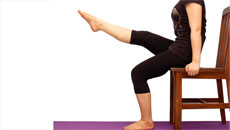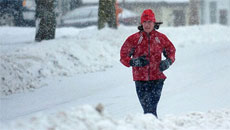When it comes to technology, there’s little question that the younger generations have a leg up on their older counterparts. A 3-year-old easily accesses apps and plays independently when given a tablet. A teenager can navigate Twitter without the help of anyone older. But what about on the field or in the gym? Who’s able to lift more, run further or play longer? The younger generations may know more about upgrading their operating systems, but their parents may be the ones who can outperform in the arena and on the field.
A recent study, led by Dr. Grant Tomkinson, an exercise physiologist at the University of South Australia, found that children are less fit than their parents. After conducting studies that measured the cardiovascular health and endurance of more than 25 million children ages 9 to 17 in 28 countries from 1964 to 2010, researchers concluded that today’s children are approximately 15 per cent less fit than their parents were. When they examined the mile run, it was found that kids nowadays are close to a minute and a half slower than children were 30 years ago.
Stats such as these don’t just mean that kids can’t outrun their parents. Children’s fitness levels have declined over the last three decades, putting them at risk for developing chronic diseases and heart conditions in their adult years. Research also shows that children, who are more physically fit tend to do better in school. It’s a problem that can have negative long lasting effects if not taken seriously.
Health experts recommend that children 6-years-old and older participate in 60 minutes of vigorous activity over the course of a day. It’s reported that only one-third of American children currently meet the requirement. The World Health Organization suggests that 80 per cent of the younger generations are not getting enough exercise.
“The younger generation have so many distractions and haven’t learned how to pace themselves in life yet,” says Craig Simms, founder and owner of Transfigure in Vancouver, BC. As a personal trainer, weight management specialist and wellness coach, Simms is able to speak from experience as he’s seen clients of all ages and abilities.
“From such a young age, kids are conditioned to prefer inactivity over moving,” Simms says. “In fact, children 3-5-years-old who attend preschool only get seven minutes of beneficial, vigorous activity per hour. This sets the stage for undeveloped body awareness and low self-esteem. Add in the stresses and expectations of modern living, they have very little to give when it’s time to get fit.”
“What’s even more interesting,” he adds, “is that many of my younger clients don’t seem to care that an older lady working out next to them is outperforming them.”
The dwindling decline in cardiovascular health has been linked to obesity. Tomkinson has reported that “about 30 per cent to 60 per cent of the declines in endurance running performance can be explained by increases in fat mass.” Obesity hinders the ability to participate in aerobic exercise and makes it harder to run. Essentially, kids are finding it easier to avoid activity.
School aged children are not being encouraged to get out and get active, but it’s necessary before any real change can occur. With a push to perform well in school taking precedence over athletic achievements and an abundance of sedentary social options, such as gaming and online interactions, children no longer spend their time running around outdoors or participating in organized sports.
So what can be done to improve the fitness levels and decrease the obesity rates of future generations? Simms offers his opinion on the problem.
“Early exposure to sport is crucial,” he says. “This will improve their self efficacy and instil a positive association with physical activity for years to come. Unfortunately, many of my younger clients have never played sports and tend to view exercise as a form of torture.”
Changing the attitudes of children is not an easy undertaking, but a necessary one to ensure they grow up to live healthy lives. The government in many countries has taken notice of the recent sobering stats and has begun to question what more they can do to reverse the downward trend.
Perhaps more importantly, and in addition to school programs and government intervention, Simms believes that it begins with the parents.
“I think this what is hurting a lot of today’s children – poor nourishment and a host of bad habits passed down from the previous generation,” he says. “Parents need to lead by example in this regard; sadly many do not and their children pay the price in the end.”
While parents may run faster and further than their children’s generation, it’s not an accomplishment they should be proud of but instead one they need to work to correct. Exercise is a must and active children will grow up to be healthier adults. Kids may think it’s cool to know more about computers than their parents, but being able to keep up when it comes to their fitness is just as important for living a long and healthy life.






